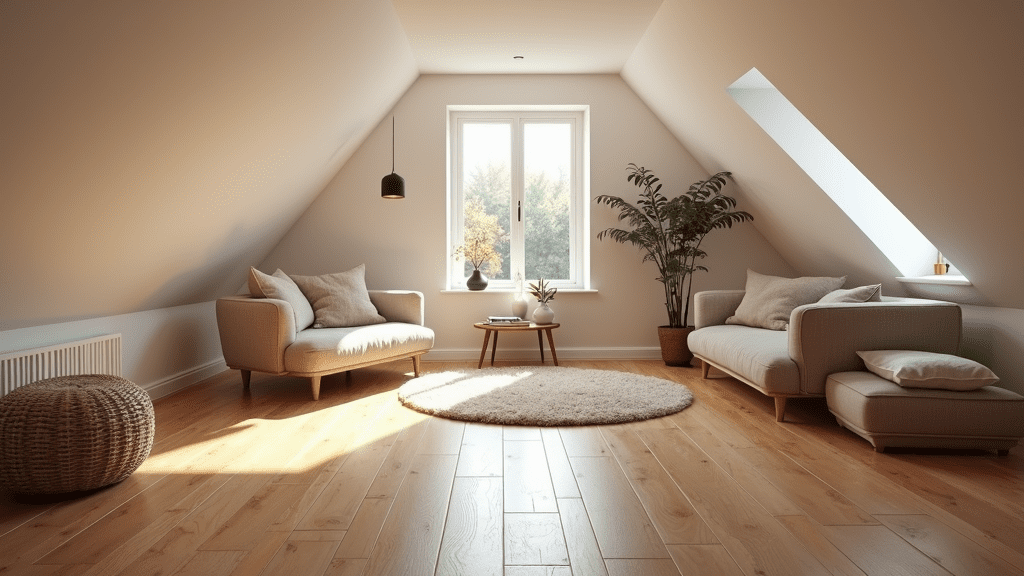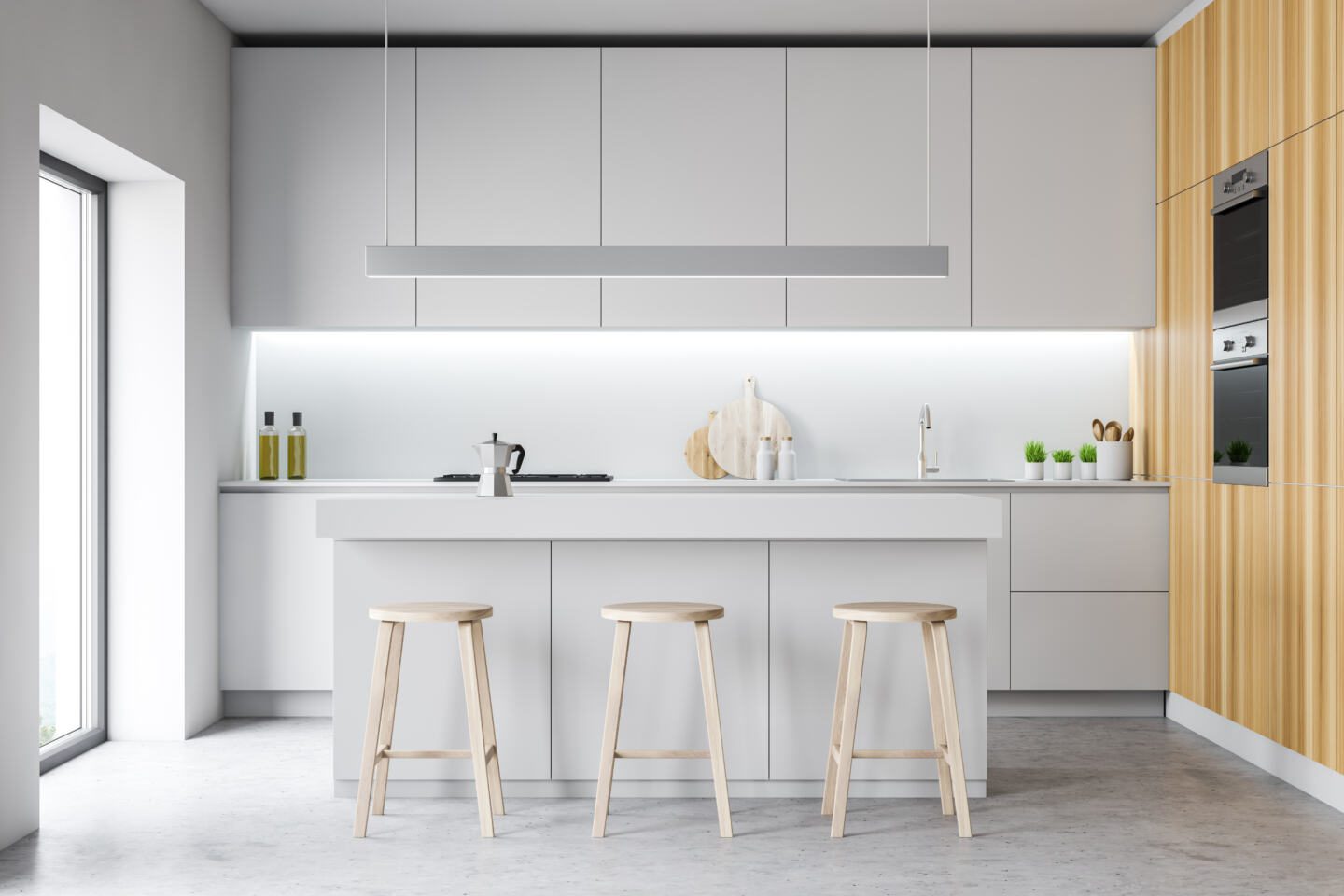As colder months roll in, homeowners across the North face one persistent challenge, keeping indoor spaces warm without relying solely on heating systems. Among all household surfaces, floors play a crucial role in winter comfort. Cold underfoot conditions can make entire rooms feel chilly, even if the air temperature seems acceptable.
For families, older residents, or anyone sensitive to temperature drops, the choice of flooring can significantly affect comfort and daily living. Understanding which materials retain warmth and how floor structure interacts with insulation can help you make informed, cost-effective decisions that increase comfort and reduce heat loss.
Why Floors Feel Cold in Northern Homes
In winter, ground-level rooms feel colder because cool air naturally settles at the lowest point. This is amplified in homes with minimal subfloor insulation or where materials like concrete dominate. High-density materials such as stone or tile conduct heat rapidly, drawing warmth from your feet. By contrast, carpet and certain engineered materials slow down this transfer, preserving a warmer surface temperature.
In Manchester and the surrounding areas, homes commonly feature older architectural styles with limited insulation. These properties often struggle to maintain heat in places like kitchens or hallways. To make lasting improvements, consider pairing high-performance flooring materials with insulation underlays to reduce thermal transfer.
Some homeowners have turned to the experts in flooring in Manchester to find the most suitable materials for their specific property layouts. Choosing the right product helps retain heat and enhances the look and functionality of a room during the colder seasons.
Which Flooring Materials Offer the Best Warmth
Not all flooring types perform equally when it comes to warmth. Carpet remains one of the most effective options for retaining heat. It’s made of fibres that trap warm air and slow down heat loss from the surface. Thick-pile carpets, in particular, provide a cushiony feel and strong insulation for bedrooms and living rooms.
Engineered wood is another excellent option. Unlike solid hardwood, engineered boards consist of multiple layers, allowing them to withstand moisture better while retaining more warmth. These floors also work well with underlay systems that enhance thermal insulation.
Laminate flooring has grown in popularity due to its practicality and affordability. While it may not insulate as well as carpet, many laminate products now feature built-in thermal backing. Paired with underlay, they offer a warmer alternative to stone or ceramic finishes, especially in high-traffic areas.
Underfloor Heating and Material Compatibility
Selecting the right flooring material is essential if you are installing or already using underfloor heating. Stone and ceramic tiles perform well due to their high thermal conductivity, meaning they heat up quickly and spread warmth efficiently.
Engineered wood and luxury vinyl also work with most modern underfloor heating systems. Manufacturers often specify temperature limits, so checking these is important to prevent damage. Solid hardwood can be tricky, extreme heat may lead to shrinkage or warping.
Thermal efficiency matters too. Floors with high conductivity warm up quickly but lose heat just as fast when the system turns off. Materials with lower conductivity may heat more slowly but stay warm longer, potentially lowering energy consumption when used strategically.
Low-Cost Solutions to Improve Cold Floors
You don’t always need a full renovation to enjoy warmer floors during winter. Practical measures can make a big difference for homeowners on a budget or in rental homes. One option is using thick area rugs in key areas such as lounges or bedrooms. This instantly boosts underfoot warmth and adds a touch of comfort and style.
Insulating underlays are another effective method. Placed beneath carpets, laminate, or engineered wood, they improve thermal retention while cushioning the floor. Many options can be installed without lifting the entire floor, making them suitable for DIY upgrades.
Flexible sealant applied along skirting boards can also help. In older homes, small gaps often develop between floors and walls, allowing draughts to enter. Sealing these areas prevents warm air from escaping and reduces cold zones near the floor perimeter.
Even simple steps like adding thick doormats or switching to soft-soled indoor footwear help reduce heat loss through feet and flooring. These small tweaks add to a cosier living environment without extensive effort or cost.
Special Considerations for Manchester Properties
Many homes in Manchester feature unique structural elements, such as suspended timber subfloors in Victorian terraces or uninsulated concrete slabs in newer developments. Each setup poses its own challenge in terms of heat retention.
Suspended wooden floors can let cold air rise from below. Insulating between joists is often recommended, but it’s not always feasible in occupied homes. Where that’s not possible, using thicker floor coverings or insulating underlays becomes especially important.
In contrast, concrete subfloors absorb and store cold from the ground. Flooring that sits directly on top of this base tends to stay colder unless there’s an insulating layer in between. Engineered wood with underlay, or thermal-backed laminate, performs far better than tile or thin vinyl in these scenarios.
Winter Floor Care Tips for Heat and Longevity
Cold weather brings extra wear and tear to flooring. Grit, moisture, and lower humidity levels can all affect both appearance and performance. To preserve warmth and extend your floor’s lifespan, adopt a few simple seasonal maintenance practices.
For wood or laminate floors, avoid wet cleaning methods. Use microfibre mops or lightly damp cloths and ensure the surface dries quickly. This protects both the material and any insulating underlay beneath. Using a humidifier helps prevent wood floors from shrinking due to dry indoor air.
At entrances, place heavy-duty mats to capture debris and moisture. This reduces the chance of grit scratching the floor and helps maintain cleaner, warmer interiors. Consider rotating floor coverings or rugs through winter to distribute wear evenly and ensure consistent comfort.
Keeping Warm Starts Underfoot
Flooring has a powerful effect on winter comfort in homes across Manchester and the North. Whether you’re living in a terrace with timber subfloors or a newer property with a concrete base, your choice of material can shape the warmth and feel of each room. Even if a complete overhaul isn’t on the cards, small changes like better underlays, thicker rugs or sealing gaps can significantly reduce heat loss. With the right approach, cold floors don’t have to be the norm, your home can remain comfortable and cosy all winter long.




